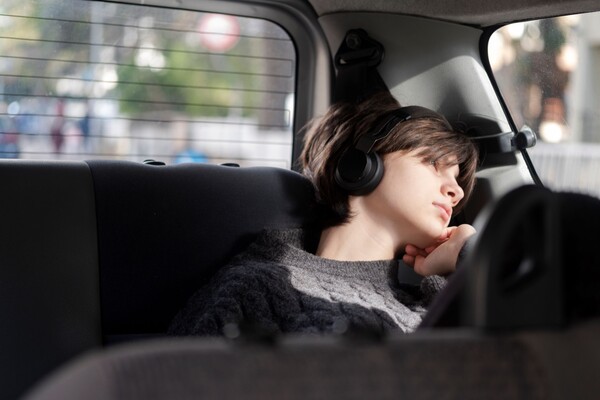Childhood depression is a condition that should not be overlooked. It is becoming increasingly common, and if left untreated, it can pose long-term risks to a child's physical and mental health.
Recent estimates suggest that one in five children will experience at least one episode of depression before adulthood, highlighting that childhood depression should be taken as seriously as it is in adults. Korea Biomedical Review spoke with Kim Jae-won, a professor of pediatric psychiatry at Seoul National University Children's Hospital, about the causes and treatment of childhood depression.

Question: What is pediatric depression?
Answer: Depression is characterized by low mood and low motivation, accompanied by a variety of cognitive, mental, and physical symptoms, which impair daily functioning. When this condition occurs in children and adolescents, it is called pediatric depression. The cause of childhood depression is 60% due to environmental factors such as academic stress, family, and peer relationships, and 40% due to genetic factors.
In Korea, pediatric depression is becoming more prevalent. According to the National Health Insurance Service, the number of depression visits for children (ages 6 to 11) increased by 92% from 2018 to 2022, and 57% for adolescents (ages 12 to 17). This increase is attributed to the high levels of stress that Korean children and adolescents are exposed to from an early age.
Q: What interventions are helpful for each risk factor for depression in children?
A: Conflict with friends and bullying are important risk factors for childhood depression, so maintaining good peer relationships is crucial. Even if there are issues with other peer relationships, having one or two good friends from a young age can help relieve stress.
Additionally, social media use exposes children to misinformation that can increase their risk of depression, self-harm, and suicide. Therefore, it may be more beneficial to avoid social media during childhood and adolescence. Many countries are implementing online child protection laws, including age restrictions.
Childhood obesity is another growing concern. Although a direct causal relationship has not been proven, research shows that childhood obesity and depression are related. Both conditions require active prevention.

Q: What are the symptoms of childhood depression?
A: Pediatric depression can be accompanied by a loss of appetite, insomnia, and difficulty concentrating, similar to adult depression. Children often complain of being unable to concentrate on schoolwork or lose interest in activities they once enjoyed. Children unaware of their depressive state may express irritability or sensitivity instead. Unlike adults, pediatric depression can also be accompanied by ADHD, conduct disorder, and anxiety, making a systematic diagnosis important.
Puberty and depression are often confused. While mood swings during adolescence are natural, those caused by depression are persistent, disruptive, and require treatment.
To differentiate between puberty and depression, parents should pay close attention to changes in their child. For example, if a child who excelled academically in elementary school suddenly struggles in middle school, parents may first suspect ADHD, but it is more likely to be related to concentration issues linked to depression.
Q: How is depression diagnosed in children?
A: To diagnose depression, symptoms like low mood or irritability must last more than two weeks, with at least four of the warning signs of depression.
At Seoul National University Children's Hospital, pediatric depression is systematically diagnosed using the DSM-5 (American Psychiatric Association) and the CDRS-R (Childhood Depression Rating Scale). Additionally, the K-SADS interview tool is used to diagnose other psychiatric conditions.
Q: How is childhood depression treated?
A: If left untreated, pediatric depression can develop into chronic depression that impacts adulthood, so accurate diagnosis and treatment are essential. Treatment recommendations include psychotherapy for mild cases with a CDRS-R score under 40 and antidepressant medication for moderate to severe cases with a score of 40 or higher.
However, about 60% of patients respond to antidepressant treatment. Response is typically evaluated after 8 to 12 weeks, with a 50% or greater reduction in symptoms considered a positive response. If effective, treatment continues for about six months, after which the dosage is gradually reduced.
If the patient does not respond to antidepressants, the medication is changed, and cognitive behavioral therapy is added. While there are concerns about the increased risk of suicidal thoughts with long-term antidepressant use, research suggests that the benefits outweigh the risks.
Additionally, since children and adolescents often struggle to express or regulate their emotions, therapies like play therapy or emotion regulation training are often used. Family therapy is also important to involve parents in the treatment process.
For children with both depression and physical health issues, maintaining physical health is crucial. Behavioral activation therapy can be used to help children plan and engage in enjoyable activities, such as exercises or hobbies, to support their well-being.
Q: Are there any treatment precautions?
A: Two key aspects of pediatric depression treatment are suicide prevention and parental support. Even mild depression can increase the risk of self-harm or suicide, so preventing this is essential. Parents must educate themselves about depression to understand their child’s condition and provide continuous support through the long treatment process.
Q: What can be done to prevent depression in children?
A: The most important prevention of childhood depression is to create a healthy environment for both the mind and body. Encouraging physical activities instead of excessive gaming or phone use can provide relaxation and prevent depression. However, the current educational environment in Korea makes it difficult for children to find leisure time, so parents must take the initiative to create space for their children to rest.
Regular screenings are also crucial for early detection and prevention. In the U.S., annual depression screenings are recommended for adolescents aged 12 to 18. In Korea, emotional behavioral screenings are conducted for elementary, middle, and high school students, but these are not sufficient. It is recommended to use assessment tools like the PHQ-9 to conduct annual depression screenings at home."
Related articles
- Korea approves 1st AI-powered software to screen for depression
- Starting next January, medical bills for depression diagnosis will be covered
- Korean teenage boys' smoking rate drops by two-thirds over 20 years
- Pet loss syndrome can get serious enough to cause depression
- Migrant workers in Korea face isolation and rising suicide rates
- [Column] What is a considerate mind?
- KAIST, University of Michigan develop wearable device to predict depression symptoms
- Janssen Korea’s Concerta supply strained amid soaring ADHD prescriptions and tighter controls
- Narcotic ADHD drug prescription jumped over 2.5 times in 5 years
- Prolonged ADHD drug shortage sparks parental outcry
- Short, fast economic growth leads to higher suicide rate in rich countries: study
- Korea's mental health support project users concentrated in Seoul, younger adults
- Lee administration declares all-out war on suicide

